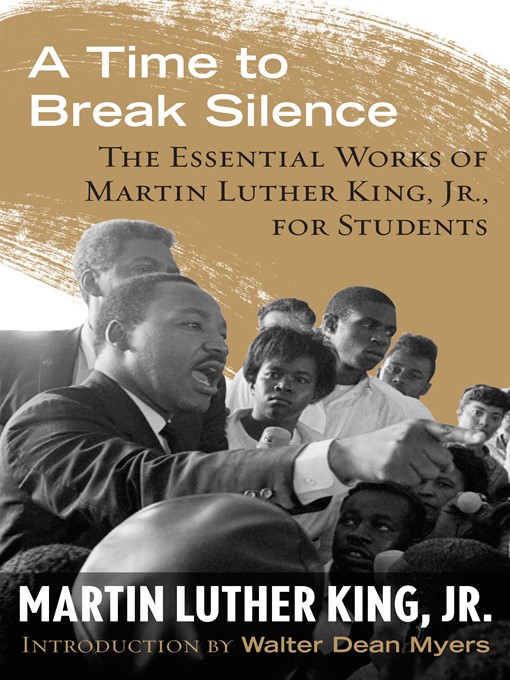The first collection of King’s essential writings for high school students and young people
A Time to Break Silence presents Martin Luther King, Jr.'s most important writings and speeches—carefully selected by teachers across a variety of disciplines—in an accessible and user-friendly volume. Now, for the first time, teachers and students will be able to access Dr. King's writings not only electronically but in stand-alone book form.
Arranged thematically in five parts, the collection includes nineteen selections and is introduced by award-winning author Walter Dean Myers. Included are some of Dr. King’s most well-known and frequently taught classic works, including “Letter from Birmingham Jail” and “I Have a Dream,” as well as lesser-known pieces such as “The Sword that Heals” and “What Is Your Life’s Blueprint?” that speak to issues young people face today.
- Available now
- New eBook additions
- New kids additions
- New teen additions
- Most popular
- Try something different
- See all

